Assessments¶
The first thing to do in Riskrunner, is to create an assessment. An assessment is a way to group your risks together in a logical way. For example, you can create an assessment for a project, an asset or a site. The exact way to group your risks depends on your organisation and how you want to use Riskrunner.
See also
Read more about why we use the term assessment here.
Adding an assessment¶
When you click on Assessments in the main menu, this is what you’ll see:
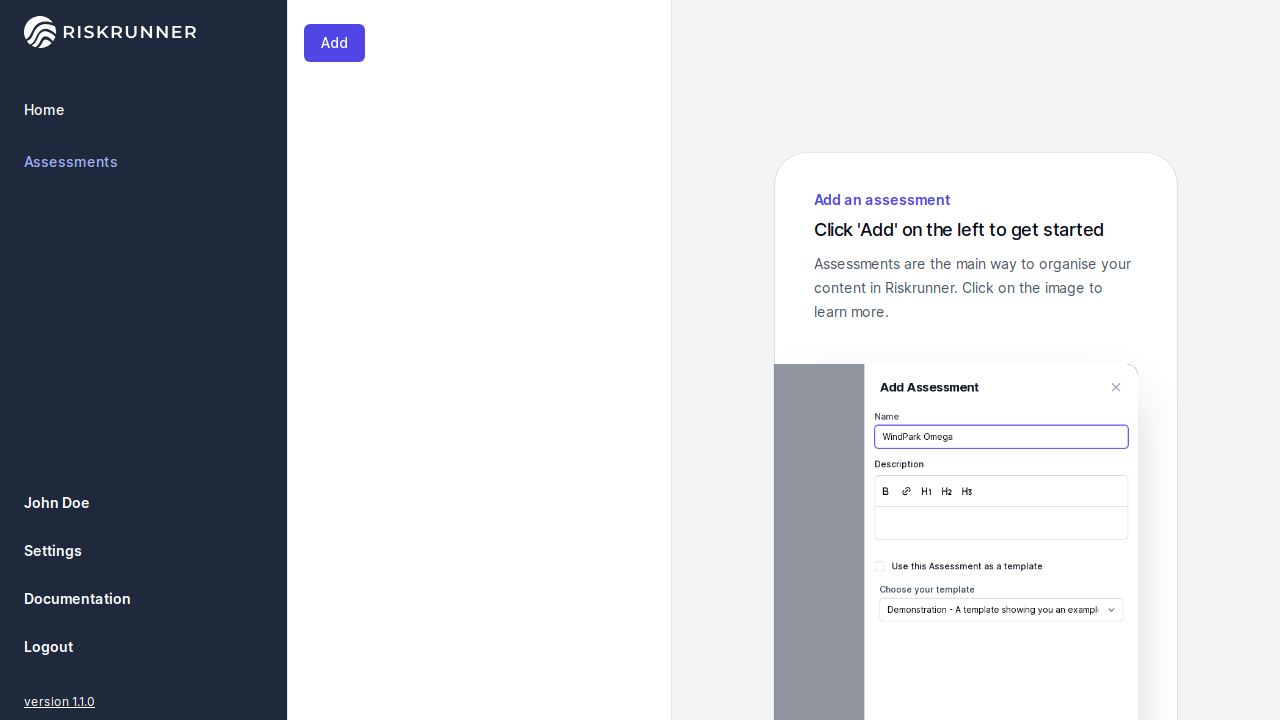
To add a new assessment, click Add which will bring up an editor:
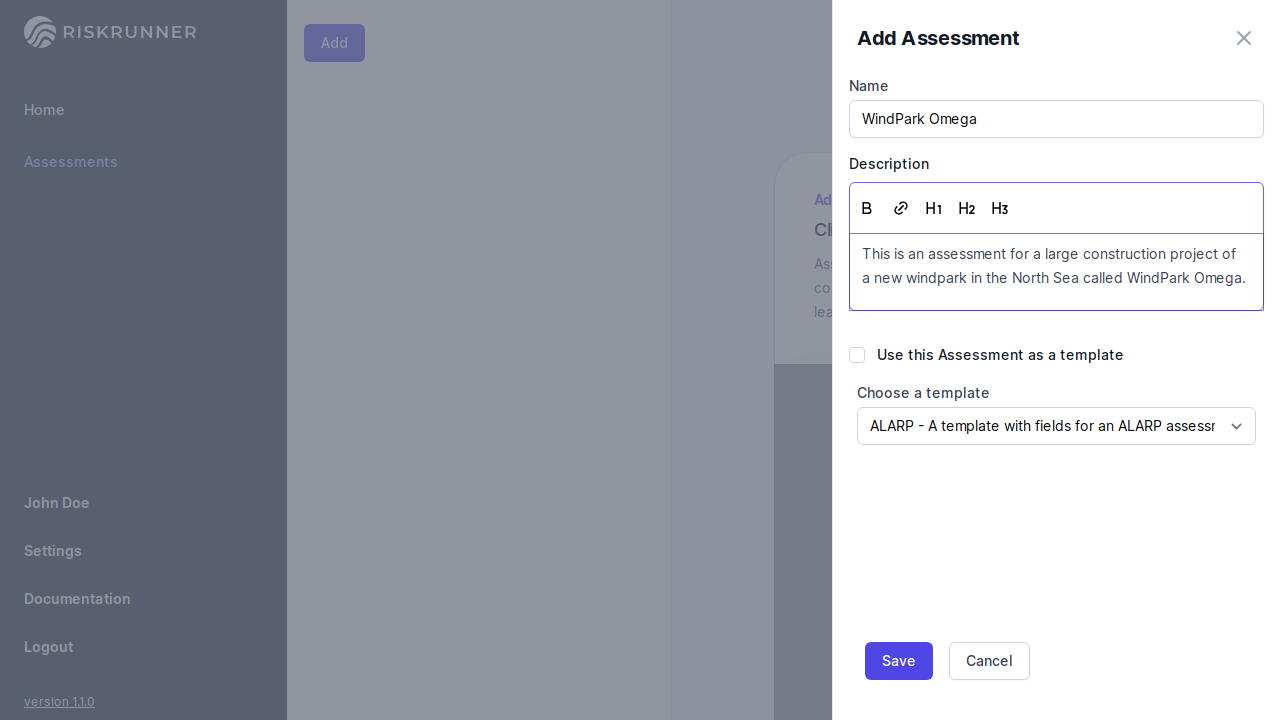
When you create an assessment, it’s a good idea to describe the scope and purpose of what you’re assessing, and who the intended audience is. That will make it easier to decide how to do the assessment regarding the risks to include, what type of language to use and the required level of detail.
See also
The description box where you describe the scope and purpose is a richtext editor, which you can learn more about here
If you click save, you have a new assessment that you can edit or delete. The next step would be to add a hazard or review.
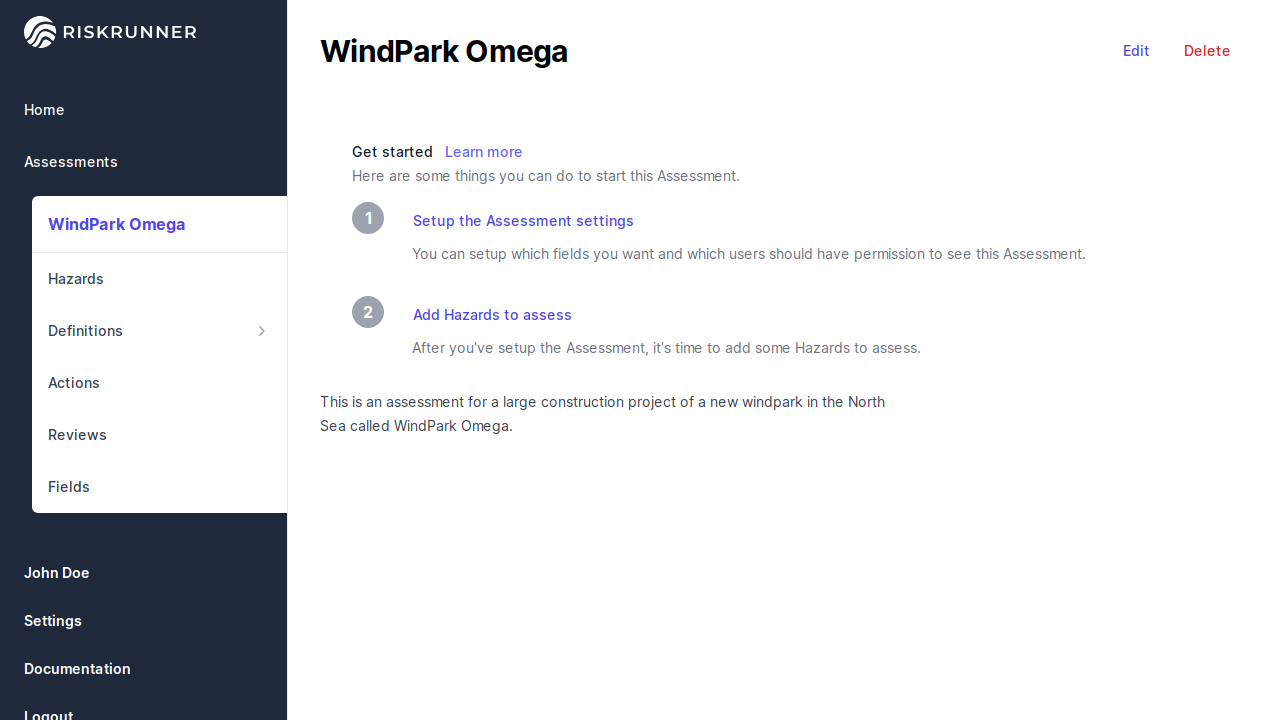
Assessment templates¶
When creating an assessment, you can choose a template to setup it up at your convinience.
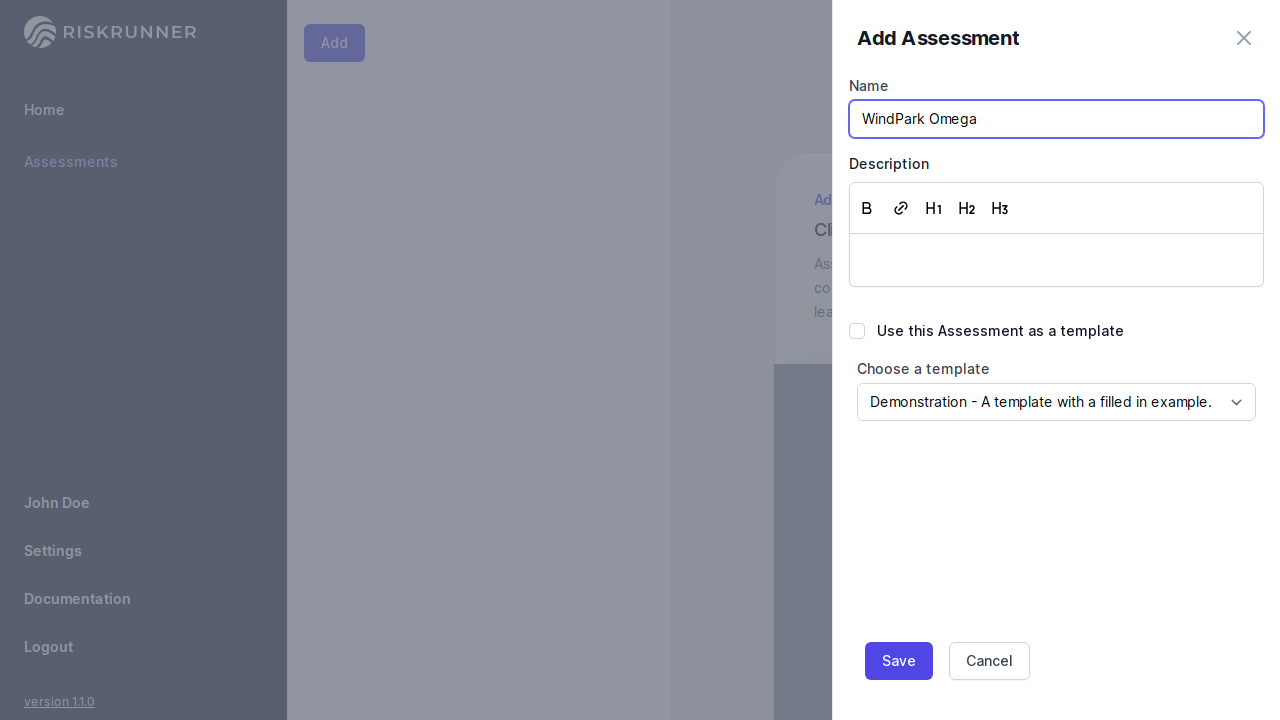
There are two types of templates available:
Builtin templates¶
These are predefined templates designed to help you get started quickly:
Design
Performance
Build
Demonstration : Already setup with Hazard, Top event, barrier, consequence to give you a nice example to explore.
You can disable these templates in your personal settings by toggling off the “Show Built-in Templates” option.
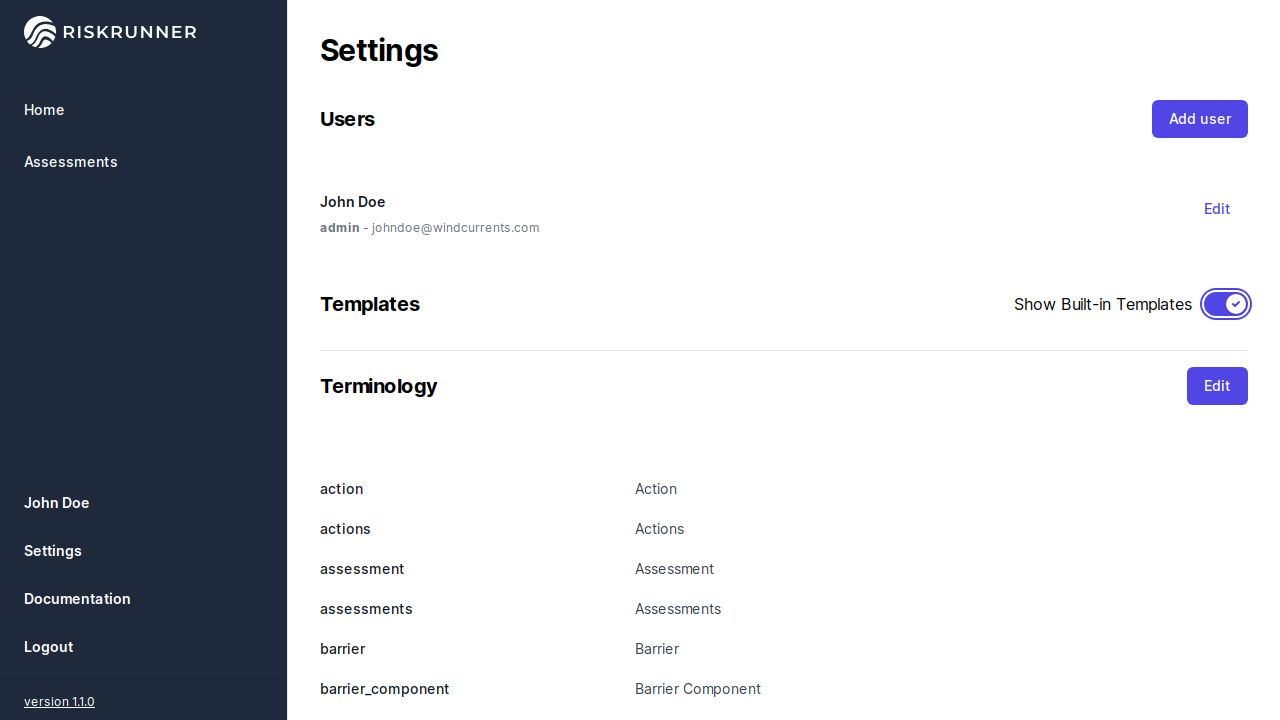
Company templates¶
When adding an assessment you can choose to make a template out of it. This new template assessment will then appear when adding an assessment. If you choose it, the assessment will be initialise with all the data inside the template assessement, giving you a way to setup assessement for your company.
Warning
History won’t be kept, only hazards, definitions, fields in their current state. Any changes in current active review won’t be taking into account.